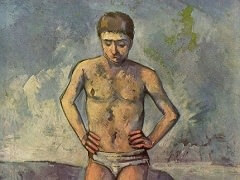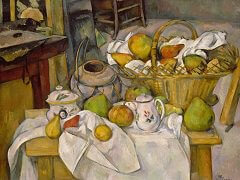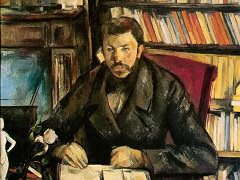Portrait of the Gardener Vallier, 1906 - by Paul Cezanne

Apart from the bathers, the only figures painted by Cezanne during the last years of his life were portraits of men and women of middle age or beyond. He surrounded himself with young friends but preferred to paint people of his own generation. In 1902 he told the archaeologist Jules Borely:
'It is in the eyes of people of my own age that I see the past once more. Above all, I love the look of people who have grown old without abandoning the old customs, of people who have lived their lives in accordance with the laws of time. I despise those who attempt to overcome those laws. Look at the old man who owns that cafe, sitting on his doorstep under that spindle tree. What style! And now look at the girl shop assistant. Of course she is pretty, and there is nothing to say against her - but her hair and her clothes are so banal and deceitful.'
Cezanne liked the patina that time gave. He hated artificiality and progress. The people who were close to him and served him in his old age - and whom he trusted - were Mme Bremond, his housekeeper, and Vallier, his gardener. Vallier sat for him several times, wearing a straw hat or a sailor's hat. He was probably working on one of these portraits, which remain unfinished, a few days before he died. On 28 September 1906, shortly before his death, he wrote to his son: "I still see Vallier, but I am so slow at my work that it saddens me.'
Despite this declaration, the broad, dynamic brush strokes of this painting reveal nothing of the painter's difficulties. He chose a range of sombre, dark tones - greens and blues - that are in keeping with the elderly sitter. The rather solemn pose and slightly overwhelmed expression on the man's face make the portrait an archetype of old age, and Cezanne's humanity irresistibly calls to mind the faces of old people painted by Rembrandt.














